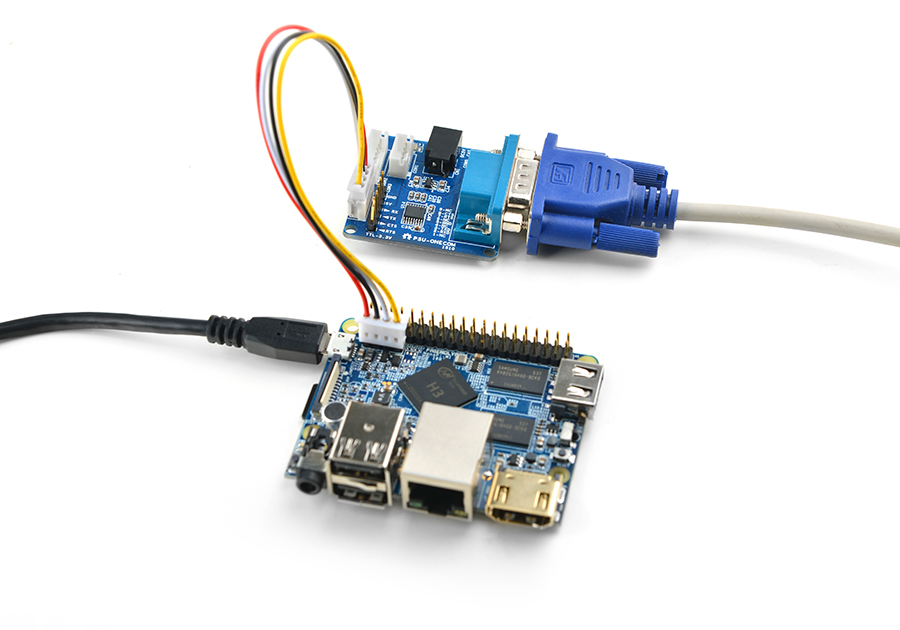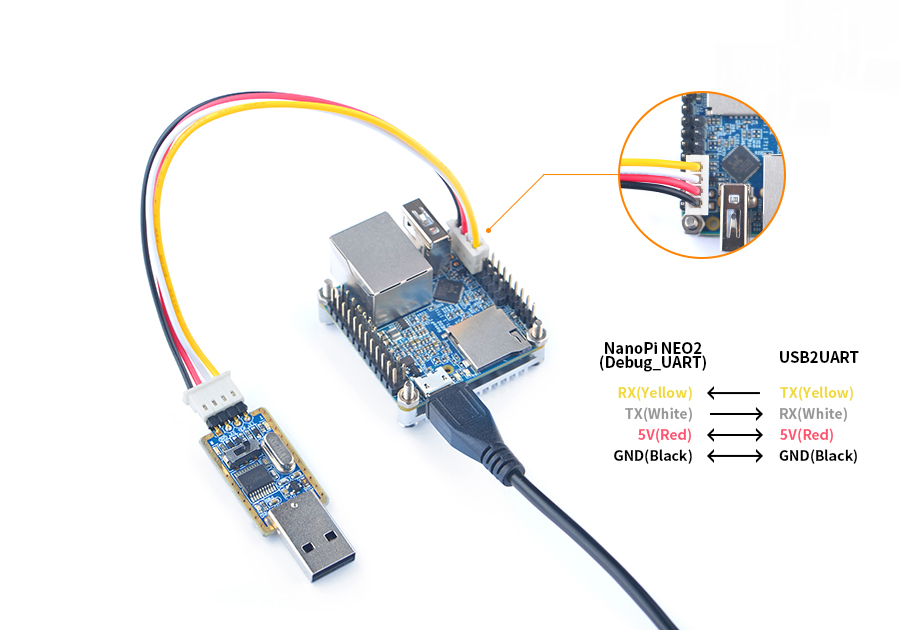Difference between revisions of "Template:FriendlyCoreGeneral"
(updated by API) |
(→HDMI或者3.5mm音频设备输出声音) |
||
| Line 141: | Line 141: | ||
You can run "hciconfig" to check bluetooth's status. | You can run "hciconfig" to check bluetooth's status. | ||
| − | === | + | ===Audio via HDMI or 3.5mm Audio Jack=== |
系统默认接HDMI或者3.5mm耳机座没有输出声音,因为系统缺省没安装声音部分的安装包。如希望HDMI或者3.5mm耳机座接音频设备输出声音,需要给系统安装上缺省的alsa包。 | 系统默认接HDMI或者3.5mm耳机座没有输出声音,因为系统缺省没安装声音部分的安装包。如希望HDMI或者3.5mm耳机座接音频设备输出声音,需要给系统安装上缺省的alsa包。 | ||
* 首先,保证你的板子刷的是最新Debian固件,并且能连外网; | * 首先,保证你的板子刷的是最新Debian固件,并且能连外网; | ||
Revision as of 15:05, 28 March 2018
Contents
1 Work with FriendlyCore
1.1 Introduction
FriendlyCore is a light Linux system without X-windows, based on ubuntu core, It uses the Qt-Embedded's GUI and is popular in industrial and enterprise applications.
Besides the regular Ubuntu core's features our FriendlyCore has the following additional features:
- it supports our LCDs with both capacitive touch and resistive touch(S700, X710, HD702, S430, HD101 and S70)
- it supports WiFi
- it supports Ethernet
- it supports Bluetooth and has been installed with bluez utilities
- it supports audio playing
- it supports Qt5.9 EGLES and OpenGL ES1.1/2.0 (Only for S5P4418/S5P6818)
1.2 FriendlyCore's User Accounts
- If your board is connected to an HDMI monitor you need to use a USB mouse and keyboard.
- If you want to do kernel development you need to use a serial communication board, ie a PSU-ONECOM board, which will allow you to operate the board via a serial terminal.Here is a setup where we connect a board to a PC via the PSU-ONECOM and you can power on your board from either the PSU-ONECOM or its MicroUSB:
For example, NanoPi-M1:
You can use a USB to Serial conversion board too.
Make sure you use a 5V/2A power to power your board from its MicroUSB port:
For example, NanoPi-M1:
- FriendlyCore User Accounts:
Non-root User:
User Name: pi Password: pi
Root:
User Name: root Password: fa
The system is automatically logged in as "pi". You can do "sudo npi-config" to disable auto login.
- Update packages
$ sudo apt-get update
1.3 Configure System with npi-config
The npi-config is a commandline utility which can be used to initialize system configurations such as user password, system language, time zone, Hostname, SSH switch , Auto login and etc. Type the following command to run this utility.
$ sudo npi-config
Here is how npi-config's GUI looks like:

1.4 Develop Qt Application
Please refer to: How to build Qt application
1.5 Setup Program to AutoRun
You can setup a program to autorun on system boot with npi-config:
sudo npi-configGo to Boot Options -> Autologin -> Qt/Embedded, select Enable and reboot.
1.6 Extend TF Card's Section
When FriendlyCore is loaded the TF card's section will be automatically extended.You can check the section's size by running the following command:
$ df -h
1.7 WiFi
You can use the NetworkManager utility in FriendlyCore to manage its network. You can run "nmcli" in the commandline utility to start it. Here are the commands to start a WiFi connection:
- Check device list
sudo nmcli devNote: if the status of a device is "unmanaged" it means that device cannot be accessed by NetworkManager. To make it accessed you need to clear the settings under "/etc/network/interfaces" and reboot your system.
- Start WiFi
sudo nmcli r wifi on- Scan Surrounding WiFi Sources
sudo nmcli dev wifi- Connect to a WiFi Source
sudo nmcli dev wifi connect "SSID" password "PASSWORD"
The "SSID" and "PASSWORD" need to be replaced with your actual SSID and password.If you have multiple WiFi devices you need to specify the one you want to connect to a WiFi source with iface
If a connection succeeds it will be automatically setup on next system reboot.
For more details about NetworkManager refer to this link: Use NetworkManager to configure network settings
- Use USB WiFi
Our OS system has support for popular USB WiFi drivers. Many USB WiFi modules are plug and play with our system. Here is a list of models we tested;
Number Model 1 RTL8188CUS 802.11n WLAN Adapter 2 RT2070 Wireless Adapter 3 RT2870/RT3070 Wireless Adapter 4 RTL8192CU Wireless Adapter 5 mi WiFi mt7601
1.8 Ethernet Connection
If a board is connected to a network via Ethernet before it is powered on it will automatically obtain an IP with DHCP activated after it is powered up. If you want to set up a static IP refer to: Use NetworkManager to configure network settings。
1.9 Bluetooth
If your board has an onboard bluetooth module you can search for surrounding bluetooth devices by running the following command:
hcitool scan
You can run "hciconfig" to check bluetooth's status.
1.10 Audio via HDMI or 3.5mm Audio Jack
系统默认接HDMI或者3.5mm耳机座没有输出声音,因为系统缺省没安装声音部分的安装包。如希望HDMI或者3.5mm耳机座接音频设备输出声音,需要给系统安装上缺省的alsa包。
- 首先,保证你的板子刷的是最新Debian固件,并且能连外网;
- 启动板子后,执行以下步骤安装alsa包:
$ apt-get update $ apt-get install libasound2 $ apt-get install alsa-base $ apt-get install alsa-utils
- 安装好需要的库后,拷贝一首 .wav 格式的音乐到开发板上,接上耳机或扬声器,播放音乐( 系统默认从3.5mm耳机座输出声音):
$ aplay /root/Music/test.wav
- 系统默认从3.5mm耳机座输出声音,如果想切换到HDMI需要执行下列操作:
查看系统当前所有的声卡设备的序列号。这里假设aplay的输出如下, 并不是真实情况, 请根据实际情况进行相对应的修改:
$ aplay -l card 0: 3.5mm codec card 1: HDMI
上面的信息表示card 0代表3.5mm耳机孔,card 1代表HDMI音频, 修改配置文件/etc/asound.conf如下:
pcm.!default { type hw card 1 device 0 } ctl.!default { type hw card 1 }
设置完成后需要重启系统HDMI即可输出声音。